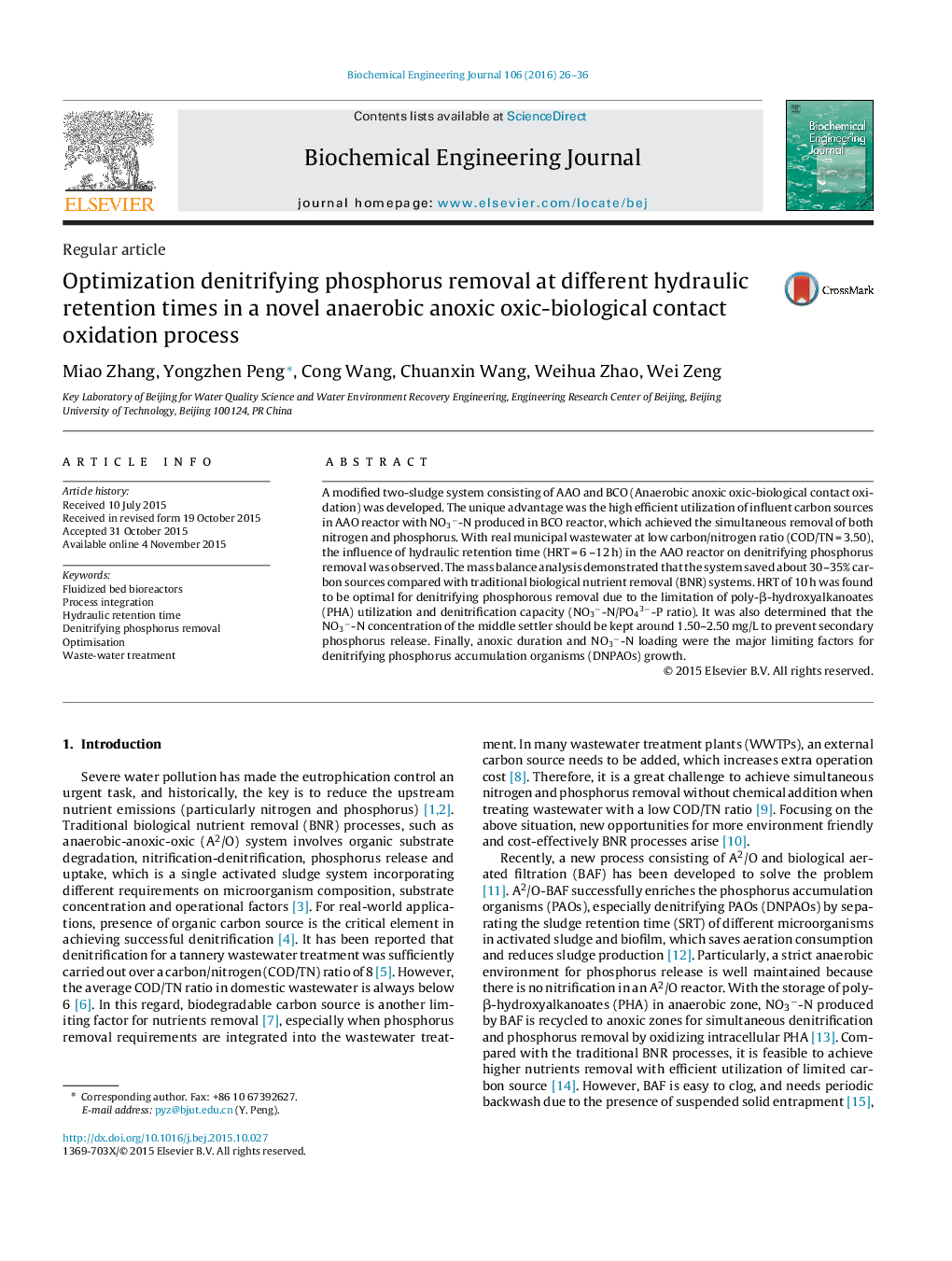| Article ID | Journal | Published Year | Pages | File Type |
|---|---|---|---|---|
| 6484001 | Biochemical Engineering Journal | 2016 | 11 Pages |
Abstract
A modified two-sludge system consisting of AAO and BCO (Anaerobic anoxic oxic-biological contact oxidation) was developed. The unique advantage was the high efficient utilization of influent carbon sources in AAO reactor with NO3â-N produced in BCO reactor, which achieved the simultaneous removal of both nitrogen and phosphorus. With real municipal wastewater at low carbon/nitrogen ratio (COD/TN = 3.50), the influence of hydraulic retention time (HRT = 6 -12 h) in the AAO reactor on denitrifying phosphorus removal was observed. The mass balance analysis demonstrated that the system saved about 30-35% carbon sources compared with traditional biological nutrient removal (BNR) systems. HRT of 10 h was found to be optimal for denitrifying phosphorous removal due to the limitation of poly-β-hydroxyalkanoates (PHA) utilization and denitrification capacity (NO3â-N/PO43â-P ratio). It was also determined that the NO3â-N concentration of the middle settler should be kept around 1.50-2.50 mg/L to prevent secondary phosphorus release. Finally, anoxic duration and NO3â-N loading were the major limiting factors for denitrifying phosphorus accumulation organisms (DNPAOs) growth.
Keywords
Related Topics
Physical Sciences and Engineering
Chemical Engineering
Bioengineering
Authors
Miao Zhang, Yongzhen Peng, Cong Wang, Chuanxin Wang, Weihua Zhao, Wei Zeng,
